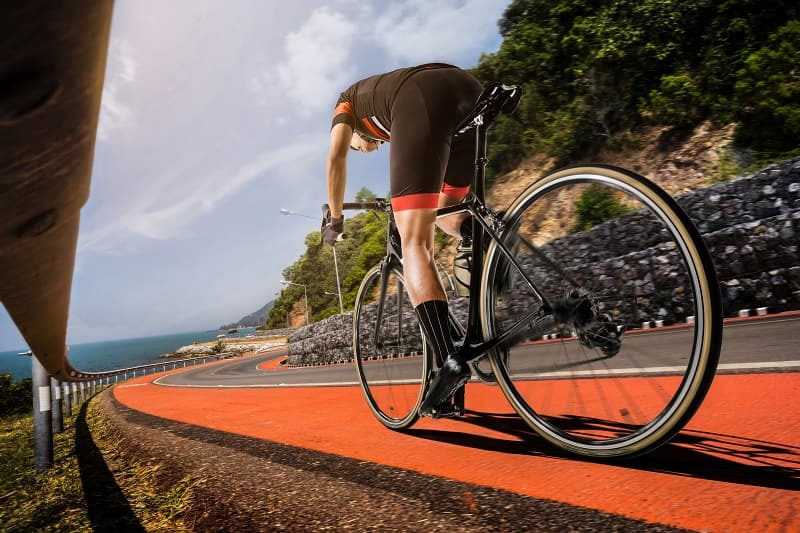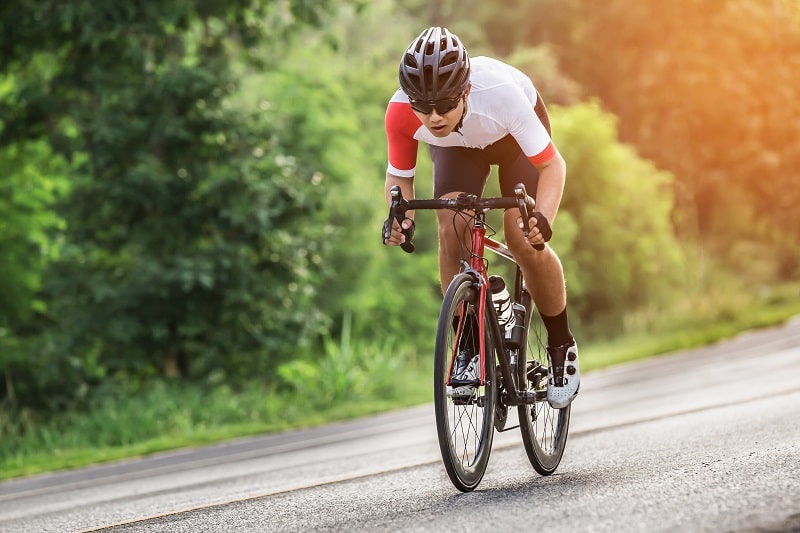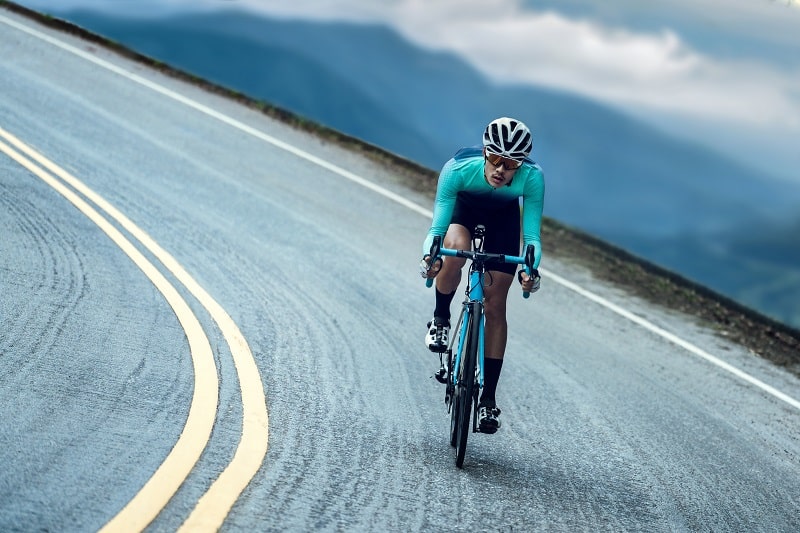Riding your bike into a headwind might be a challenging task as it causes extra resistance. In other words, your speed will be cut in half with the similar effort used as when you ride in normal weather conditions. Therefore, the headwind breaks your energy, and you will be exhausted soon.
This article gives you some advice and tips about how to ride into a headwind to help you cope with this situation. Let’s check out our easy and quick instructions now!
Contents
- 1 Advice on Riding Bicycle into The Wind
- 2 Some Tips on How to Ride into a Headwind
- 2.1 #1. Checking the weather forecast and planning your ride
- 2.2 #2. Keeping your eye on the crosswind’s situations
- 2.3 #3. Using your gears wisely
- 2.4 #4. Keeping the right position
- 2.5 #5. Wearing the appropriate type of clothes
- 2.6 #6. Using the tailwind
- 2.7 #7. Sharing the workload
- 2.8 #8. Going slower
- 3 The Bottom Line
Related:
==> Best Tubeless Pumps and Inflators in 2021: Reviews and Buying Guide
==> Best Track Pumps in 2021: Reviews and Buying Guide
Advice on Riding Bicycle into The Wind

Cycling in Headwinds
The headwind blows in the opposite direction of yours, and it will cause difficulties when you ride. You cannot maintain the usual average speed or ride flat out. So, in this case, you should set off earlier, choose another path or choose another gear, helping you pedal with an easier cadence.
Cycling in Tailwinds
As you might know, the wind blowing in the same direction as the traveling object is known as the tailwind. Cycling in tailwinds is immensely beneficial as you can ride at high speed without much effort. Especially when you ride downhill, the strong tailwind will push you to ride very quickly. Thus, if possible, you should plan your route on a windy day with tailwinds.
Cycling in Crosswinds
Crosswinds will be more dangerous than headwinds if it is very windy with strong gusts. They will blow you off or across the road. In this situation, you should brace yourself and lean into the wind. Keep in mind that your bicycle tires’ traction is the only factor to keep you in place.
Besides, you can control your bike more easily with a flat and wide handlebar. But the wide bar should not be used in headwinds.
Some Tips on How to Ride into a Headwind
#1. Checking the weather forecast and planning your ride
It should be the most important step before you intend to ride as you will know what might be becoming. Plus, you also can use the pre-ride check, and it will inform your route.
For instance, the forecast says that you will face strong winds. In this case, you had better plan another route cautiously to minimize the effects. On the other hand, you can seek a sheltered alternative path that traverses the wind direction.
#2. Keeping your eye on the crosswind’s situations
When there are crosswinds, you have to lean left or right to control your bike in a straight line. It would be prudent to observe the traffic around you at that time.
For example, the strong crosswinds rise, and there are several huge cars or trucks passing. These vehicles will block the wind fleetingly; from that, you are indirectly forced to steer in a direction that you lean.
Another situation of crosswinds is when you ride downhill. As you can guess, it will be more struggling to steer, so you should keep pedaling to maintain your balance at the later phase. Remember to let your elbows and hands relax to prevent oversteering.
#3. Using your gears wisely
It is apparent that selecting gear is crucial when climbing. The higher your gear is, the more resistance your bicycle might throw up. So it will not be a great idea to churn your normal gear if you are coping with the added kickback in the headwind.

#4. Keeping the right position
When you cycle into the headwind, you have to struggle with significant wind resistance. You can imagine that your body will be similar to a flag in the wind. So, to minimize this resistance, the chief method is to tuck in your elbows and get your body down low. By holding this stable and strong position, you can reduce the frontal area.
#5. Wearing the appropriate type of clothes
You should avoid the baggy clothing in the headwind as they will be a real drag. When you wear loose-fitting clothes, they will act as the parachute, causing more difficulties and making you slower during your ride.
Therefore, it will be better if you wear fitting clothes. The fitting clothes such as jackets can cause less drag and keep you warm. Besides, it would be best if you had a windproof jacket which is advantageous for you in many aspects, including sustaining the strong wind and warming up your body.
#6. Using the tailwind
When turning and getting a tailwind, you should go fast. Some cyclists might use soft pedals or coast to recover after their hard work. However, if you still keep a brisk and steady pace, you are able to achieve a considerable time with tailwinds. Thus, you can think about shifting to the bigger gear.
#7. Sharing the workload
Riding in a group will be a great idea to save your energy. When exposing to the headwind, if you sit on a wheel or ride in groups, you can save about 20-30% effort. The best advice for group riding is that you have to keep close to cyclists in front, about 6 inches off their wheels. By doing that, you can maximize the slipstream.
The group riding might be a daunting experience, and it requires practice a little bit. If it is the first time you join a riding group, so it would be much better to ask for and listen to advice from your ride buddies.
#8. Going slower
Cycling in a headwind is the same as cycling up a hill. If you ride too hard when trying to maintain your speed, you just tire yourself without effective results. It will help if you do not get frustrated and keep your mind at ease.
The Bottom Line
As you can see, strong winds will result in many obstacles for cyclists during their ride. With some tips on how to ride into a headwind, you now know how to prepare things thoroughly, check the forecast, and plan your route. Besides, you should have an excellent smartphone app to update information on your ride.

